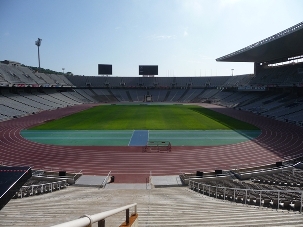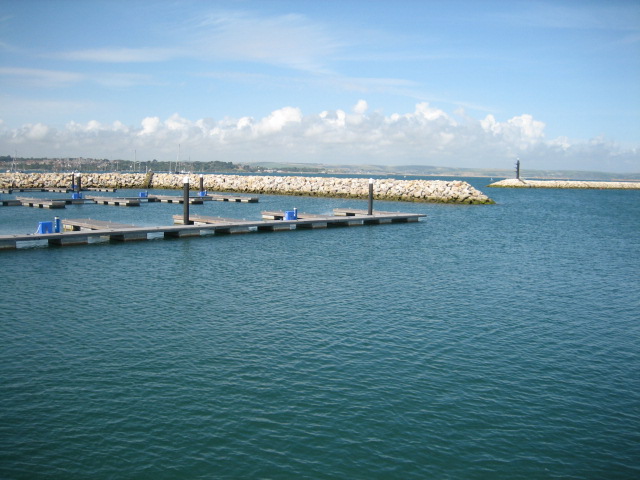December 11, 2009 | Posted by Shaun McCarthy
There has been much said and written about food related to the Olympics. During my visit to Beijing, I wrote a blog for this website criticising the food offering at the 2008 Games and I was quoted in Building Magazine this year from a presentation at a conference, describing the food as “crap”. This was accurately reported by Building who also chose to ignore everything else that was said during my 45 minute presentation; good to see the media have a grip on the important issues! During the Games, approximately 14 million meals will be served. The huge challenge to prepare and serve food on this scale is daunting. The challenge to make that food offer safe, healthy, sustainable and affordable is a mountain to climb. LOCOG are in the process of developing their food vision and strategy and the Commission are currently conducting our independent food review, the results of which will appear on this website in early 2010. One area that tends to be forgotten is that London 2012 is also Europe’s largest construction project. The workforce of the three major Stratford-based construction projects (Olympic Park, Olympic Village, and Stratford City) is expected to peak at around 16,000
…
October 31, 2009 | Posted by Shaun McCarthy
It is 31st October 2009, and exactly 1,000 days to the opening ceremony for London 2012 and time to pause for reflection. After 3 years of the Commission, numerous reports, articles, meetings, discussions and not insignificant battles, exactly what do I expect it to be like in 1,000 days time? I expect viewers on TV to see things differently. The iconic Olympic flame will come from a more renewable fuel if they are successful. As the aerial cameras pick up the north side of the park, I hope they will pick up a 2 megawatt wind turbine. I expect the opening ceremony to feature sustainability without making us all feel guilty about having a good time. I expect to see pictures of volunteers and staff of all ages, all abilities and all colours and ethnic backgrounds. I expect visitors to feel different. When they arrive at any Olympic venue (not just the Park), the place needs to “feel” sustainable. This may be from the green space they enter, the sustainable features they see such as local renewable energy, the information they receive about things like segregating their waste, or the welcome they receive from East London’s diverse and multi-cultural local
…
October 15, 2009 | Posted by Shaun McCarthy
Barcelona hosted the 1992 Olympics and is generally held to be the prime example of using the Games to create a lasting legacy for the city. I was fortunate to take a short holiday there recently so I was able to check it out. The Olympic Park was constructed in the Montjuic area of the city, a big hill on the west side comprising mostly parkland and formal gardens. The area has a grisly history, having been the Jewish quarter of the city and site of Franco’s concentration camps after the Spanish Civil War. The main Olympic stadium was constructed
…
August 28, 2009 | Posted by Shaun McCarthy
Imagine the proud athlete standing on the podium receiving a gold medal in the London Olympic Stadium. The tearful pride during the national anthem brings a lump to the throat of hundreds of millions of TV viewers around the world. As a sustainability nut, the lump in my throat will be for a different reason. My thoughts would be “I wonder what happens to the podium after the games? Where does it go? Where did the flowers come from? Were they from a water-stressed region of the world? Were they grown by people employed under decent conditions? Maybe they are not flowers at all but something that looks like flowers made from recycled paper?” (a serious suggestion made by the London Wildlife Trust). Waste is a massive subject for London 2012 and the indicators to date are really good. The ODA has achieved a ground-breaking performance during the demolition and remediation stage of the project, comfortably exceeding the 90% target for waste diverted from landfill. The construction stage is looking good too, the 90% target set by waste partner Veolia beats the previous best practice for Heathrow Terminal 5 and after a difficult start on site, this objective looks set
…
August 21, 2009 | Posted by Shaun McCarthy
The National Sailing Academy in Weymouth did us the great honour of hosting a commission meeting in July 2009. Despite the Australian jibe that the Poms are only any good at sports that involve sitting down, we should be justifiably proud of our equestrian sports people, our rowers, cyclists and sailors. The sailing venue is finished and being used now. It is a brilliant venue, using the natural sweep of the bay surrounded by world heritage Jurassic coastline as a perfect competition space and natural amphitheatre. From a sustainability point of view, the venue has a great story to tell.
…
July 23, 2009 | Posted by Shaun McCarthy
Logistics is the key to any successful major project and the London 2012 Olympic programme is the biggest in Europe. Making such a project safe, efficient and sustainable is a challenge for all involved. As Chair of the Commission for a Sustainable London 2012, I am a frequent visitor to the Olympic Park construction site. This is the largest construction project in Europe to support the Olympic Games in 2012, which is the largest peace-time organisational effort in the world. At the peak of construction, the site will receive 1,250 vehicle deliveries by per day. The Olympic Delivery Authority is currently achieving 57% of deliveries (by weight) by rail. Freight is delivered to the Bow East Logistics Centre that can handle multi-modal product shipments like aggregate, sand, steel, cable reels, pallets and containers. Six trains per day can deliver up to 8,100 tonnes of materials, equivalent to 450 lorry loads. The ODA estimates that 4 million tonnes of goods will be moved by rail, saving 120,000 tonnes of carbon dioxide during the construction phase. British Waterways’ new lock (Three Mills Lock) is now open and the ODA will be removing the construction waste by barge (on 350 tonne barges) to
…
June 5, 2009 | Posted by Shaun McCarthy
Tags: construction, plastics, stadium
I had the privilege of a VIP tour of the Olympic stadium construction site to mark the anniversary of the build phase. It is a very impressive building. The quality of everything from the concrete finish to the cable trays is superb. The design is very smart and minimalist. Only the bare essential materials are used above ground level to ensure the majority of the stadium can be dismantled after the Games. Below ground there are excellent facilities taking shape for athletes, officials and the media. Designs for the finishing touches are underway including very innovative use of sustainable plastics for the outer wrap and temporary pods to provide catering and merchandising facilities, these are a significant improvement on the tented structures we saw in Beijing. In common with the velodrome, there is much for the sustainability geek to admire, 15 percent better energy efficiency than building regulations, light, low embodied energy structure and I hope the decision will be made soon to eliminate HFC from the cooling system. My host pointed out that the London 2012 stadium will do everything the Bird’s Nest did with a quarter of the materials. Unfortunately we were also in sight of the aquatic
…
May 29, 2009 | Posted by Shaun McCarthy
Tags: Aquatic Centre, refrigerants
It is good to see that the ODA have risen to our challenge to review their chilling options for the Aquatic Centre. It was simply not acceptable to assume that HFC refrigerants with 2,000 times the global warming impact of CO2 could be used in the most iconic building in the “most sustainable Games ever”. There is no decision yet but it is good to see that they are examining the options. We have seen the case for chilling in the velodrome and we accept that there is a strong case for HFCs here. The building has many sustainable features including low embodied impacts and mostly natural cooling. The cooling load is very small compared to other venues. But what about the other venues? The ODA has fantastic process for managing their objectives but there is no policy for refrigerants despite our recommendation that there should be in our report of November 2007. In this case designers will revert to type and design things the way they always have done. We think it is time for the ODA to declare a “chiller amnesty” with their designers to establish exactly what is planned. It should be possible to look at these
…
May 8, 2009 | Posted by Shaun McCarthy
In my role as Chair of the Commission for a Sustainable London 2012 I have the pleasure of presenting our annual report today. It is a big read and addresses many issues but the central theme for me is the level of expectation for “the most sustainable games ever”. The London 2012 Games will be staged in the year that the objectives set by the Kyoto summit are expected to be achieved. It will probably also be the year of the next Earth Summit. The opportunity to show what can be done is too good to miss, failure is too horrible to contemplate. Two particular quotes come to mind, one from Lord Coe, the chair of LOCOG “London 2012 will set new standards of sustainability…” and from Olympics Minister Tessa Jowell “The Olympic Park will be a blueprint for sustainable living”. The role of the commission is to put these promises to the test and report independently to the public and our political leaders. Along with my small team of 3 staff and advised by 11 commissioners I have spent the last 4 months looking in detail at these questions. During this time we interviewed 40 senior people, referenced 43
…
March 23, 2009 | Posted by Shaun McCarthy
Last week I was invited to discuss our design and procurement reports live on BBC Radio 4. They opened with questions about the most controversial issue: the use of HFC refrigerants in building air conditioning systems. HFCs are particularly potent Greenhouse Gases. 1 Tonne of HFC in the atmosphere is equivalent to 2,000 tonnes of CO2. Unlike most key environmental impacts, the ODA have never had a policy on this issue despite our recommendations that they should. This has come home to roost in the architecturally impressive aquatic centre. Although no decision has been made at the time of posting this article, the use of 1.5MW HFC chilling capacity is under consideration. The rationale being that significant extra costs are involved and offsetting the emissions would be much cheaper. Offsetting is appropriate only if there is no other option available, like flights for competitors. In this case an option is available and could have been considered earlier. Had the ODA developed a policy and incorporated non-HFC cooling earlier in the design phase I suspect much of this additional cost could be avoided. Even if additional costs are required, government needs to decide if they wish to use this as an
…

